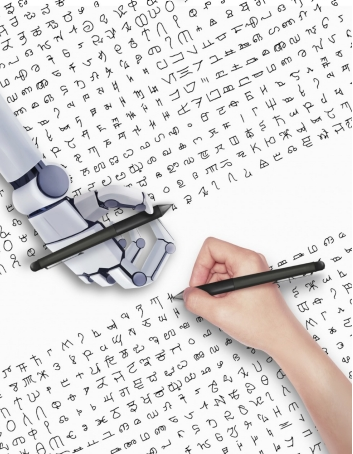A team of scientists from the universities of New York, Toronto, and MIT have created an artificial intelligence breakthrough that has the ability to learn visual concepts in a single shot, and then be manipulated in human-like ways. This advance can pave the way for smarter phones, improved speech recognition, and computers that can better understand their surroundings.
To understand the breakthrough, you must first be familiar with how people learn. When humans are exposed to a new concept, such as a new piece of kitchen equipment, a dance move, or learning a word for the first time, they often only need a few examples to understand its make-up and recognize new instances. Even though machines can now replicate some pattern-recognition tasks previously done by humans, such as an ATM reading the numbers on a check, machines often need to be given hundreds or thousands of examples to perform with similar accuracy.

Scientists developed an algorithm that captures learning abilities, enabling computers to recognize and draw simple visual concepts almost indistinguishable from those created by humans. Image source: NYU.
Published in the journal, Science , the researchers sought to shorten the learning process and make it similar to the way humans acquire and apply knowledge. To do so, they developed a “Bayesian Program Learning” (BPL) framework, where concepts are represented as simple computer programs. For example, the letter “A” is represented by computer code, which resembles the work of a computer programmer, but that code generates examples of that letter when the code is run. But no programmer is needed for the learning process, because the algorithm programs itself by constructing code to produce the letter it sees. And unlike standard computer programs that produce the same output every time they run, these probabilistic programs produce different outputs at each execution, allowing them to capture the way instances of a concept vary, such as the differences between how two people draw the letter “A.”
“It has been very difficult to build machines that require as little data as humans when learning a new concept,” said Ruslan Salakhutdinov, an assistant professor of computer science at the University of Toronto. “Replicating these abilities is an exciting area of research connecting machine learning, statistics, computer vision, and cognitive science.”
While standard pattern recognition algorithms represent concepts as configurations of pixels or collections of features, the BPL approach learns “generative models” of processes in the world, which makes learning a matter of model building or “explaining” the data provided to the algorithm. BPL is designed to capture the causal and compositional properties of real-world processes, allowing the algorithm to use data more efficiently.
Impressively, the model also learns to learn by using knowledge from previous concepts to speed learning on new concepts. An example of this would be something such as using knowledge of the Latin alphabet to learn letters in the Greek alphabet.
“Before they get to kindergarten, children learn to recognize new concepts from just a single example, and can even imagine new examples they haven’t seen,” said Joshua Tenenbaum, a professor at MIT in the Department of Brain and Cognitive Sciences and the Center for Brains, Minds, and Machines. “We are still far from building machines as smart as a human child, but this is the first time we have had a machine able to learn and use a large class of real-world concepts — even simple visual concepts such as handwritten characters — in ways that are hard to tell apart from humans.”
Source: New York University
Advertisement
Learn more about Electronic Products Magazine





